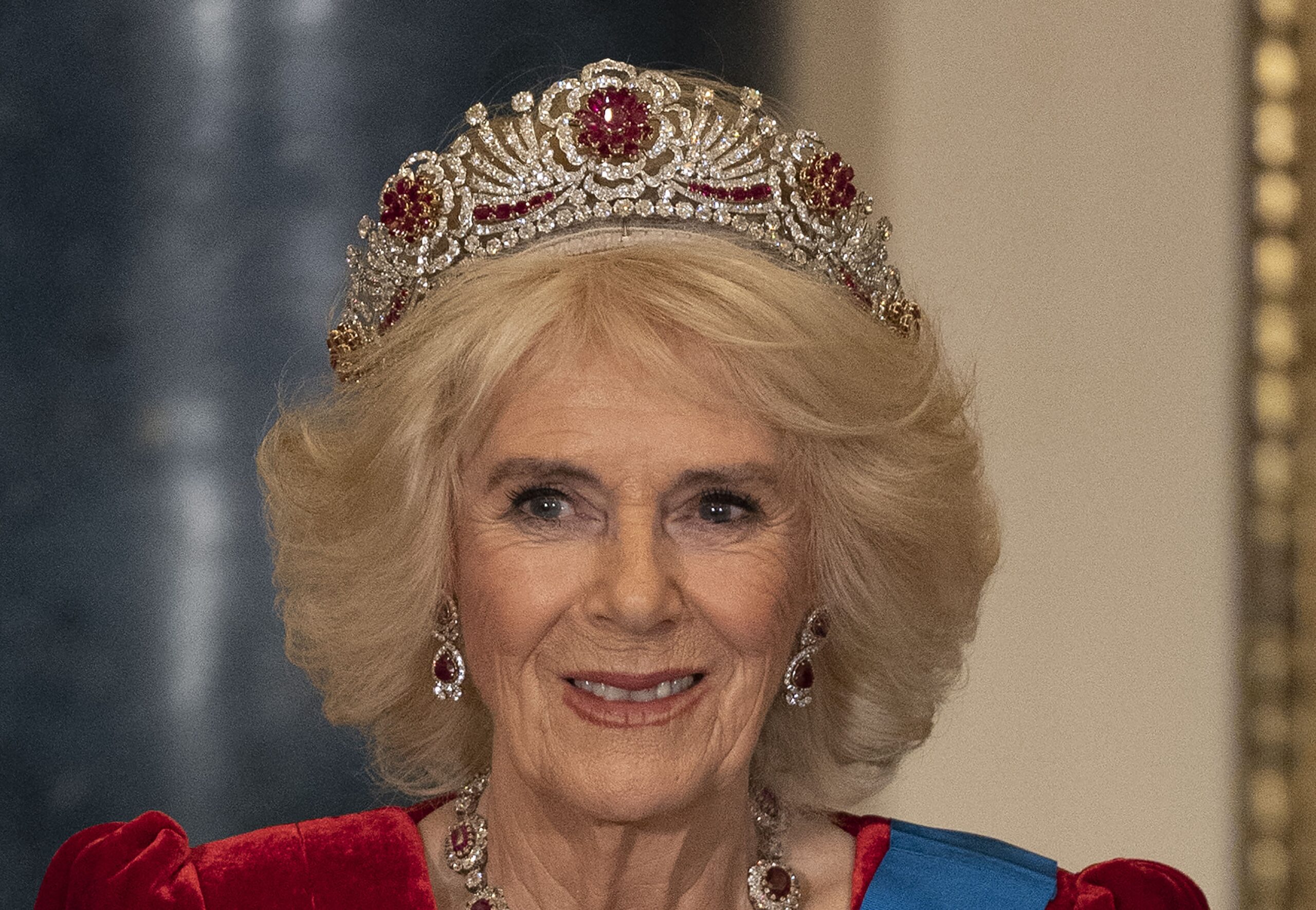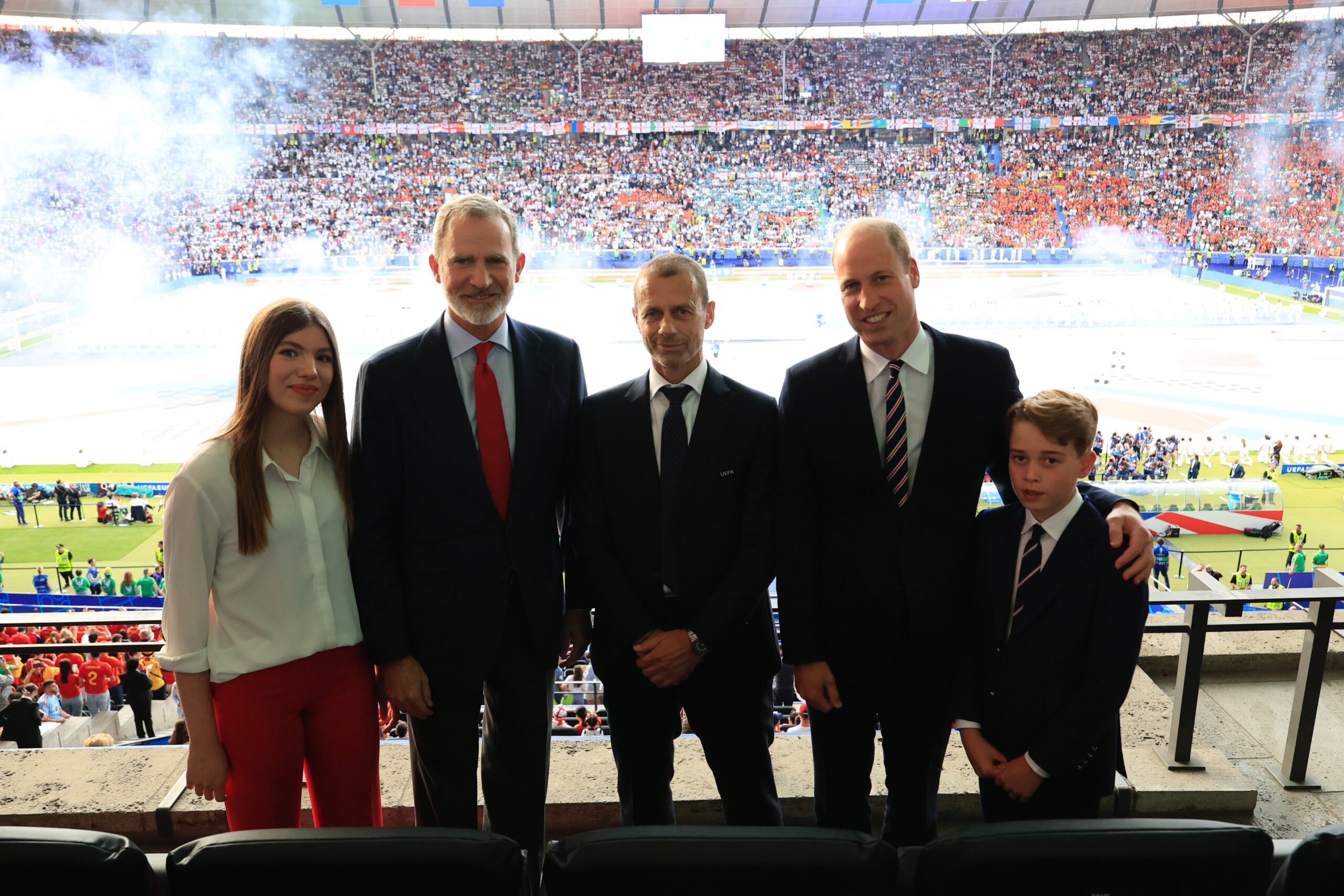Coronations are a time for tradition and mark the start of a new reign. King Charles III’s Coronation will be no different, where we will see a range of regalia throughout the ceremony.
We’ve taken a look at what the coronation regalia consists of, and the items to be used.

Some of the Coronation Regalia (RCT)
Regalia seen in the procession section of the ceremony inside Westminster Abbey
Maces
The Maces will lead The King and Queen into the abbey, and are symbols of authority. They are made of silver gilt over oak, which date between 1660 and 1695. They are also seen at other events where the Monarch is present, including the State Opening of Parliament.
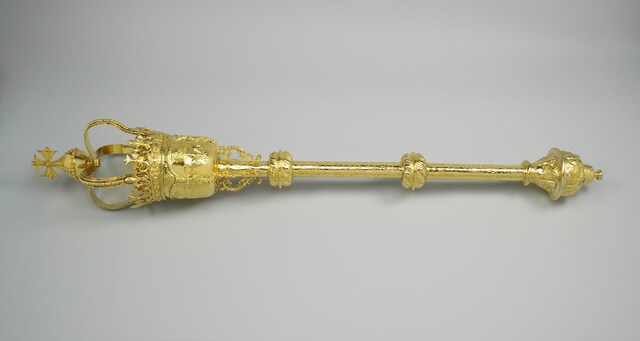
The mace which will be seen in the Coronation procession. (RCT)
Sword of State
The Sword of State symbolises royal authority.
The steel blade with a silver-gilt hilt is enclosed in a wooden case, which is covered in velvet. The scabbard has silver-gilt emblems on it including a rose, thistle, harp and fleur-de-lis, with a portcullis, royal lions and the coat of arms of William III.
During the reign of Charles II, two of these swords were made, but the first (made in 1660) did not survive. The remaining sword, made in 1678, has been used at previous coronations and the investiture of the Prince of Wales in 1969.
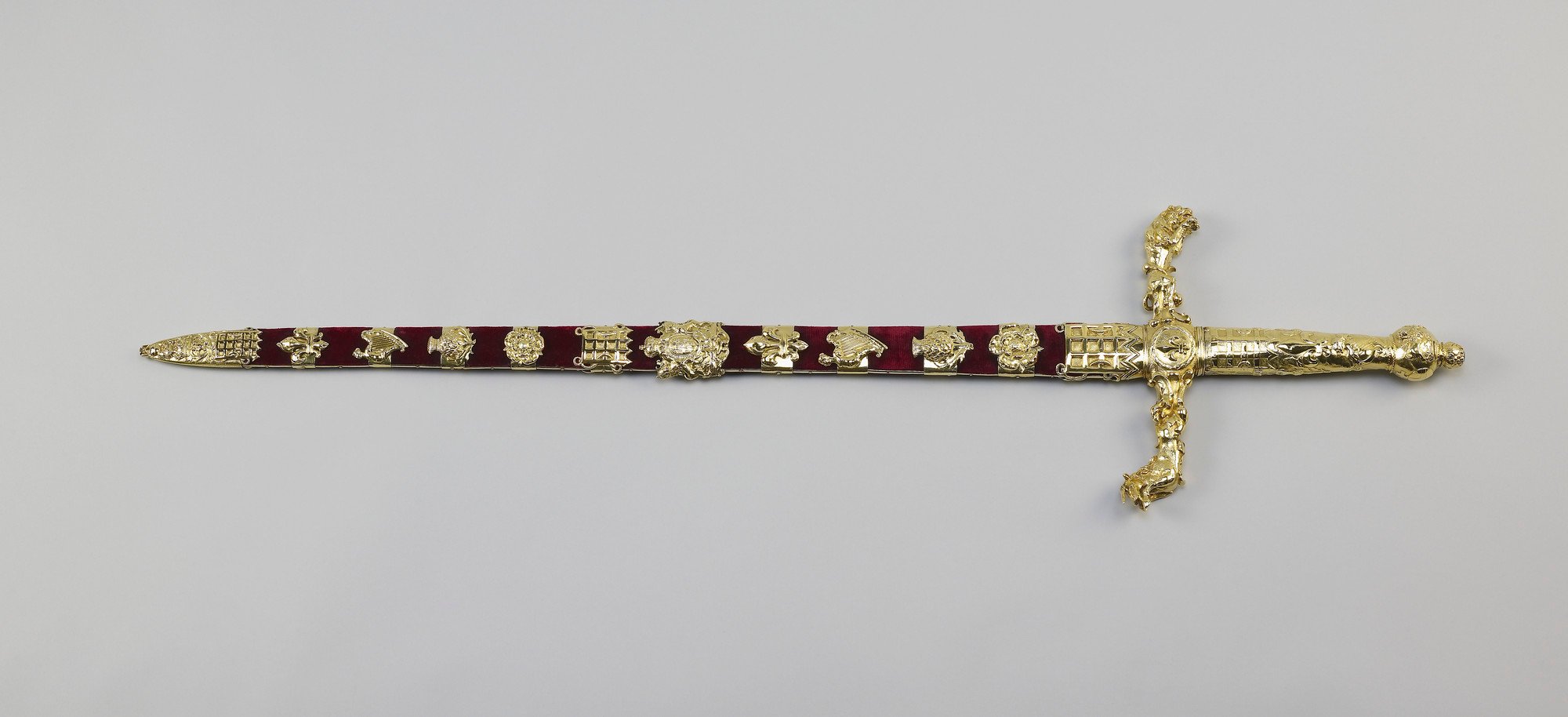
The Sword of State. (RCT)
Swords
Three additional swords will be seen during the Coronation Procession at Westminster Abbey. The notion of three swords being carried in the upright position during a Coronation Procession represents kingly duties and dates back to the Coronation of Richard the Lionheart in 1189.
– Sword of Temporal Justice – this represents the Monarch’s role as Head of the Armed Forces
– Sword of Spiritual Justice – which signifies the Monarch’s role of Defender of the Faith,
– Sword of Mercy – represents the Sovereign’s mercy and has a blunt end to it.
The three swords were made for the coronation of Charles I in 1626 and placed with the regalia in Westminster Abbey. The blades of the swords date back to the 16th century, with early 17th century gilt-iron hilts, and wire-bound grips.

The Sword of Temporarl Justice, Mercy and Spiritual Justice. (RCT)
St Edward’s Staff
St Edward’s Staff consists of a gold rod split into three sections. It was created by the Crown Jeweller, Robert Vyner, in 1661 for the Restoration, and derives from an earlier staff which was often known as the ‘Long Sceptre’.
The piece will be carried in the procession.

St Edward’s Staff. (RCT)
Regalia seen at the anointing
Ampulla
The Ampulla is a small, gold vessel in the shape of an eagle with outstretched wings. It is used to hold the holy oil which anoints the Monarch during the coronation.
Like many other pieces, it was made for Charles II in 1661.

Replica ampulla seen at Westminster Abbey
Anointing Spoon
The Anointing Spoon, sometimes known as the Coronation Spoon, has a circular bowl for the oil.
It is used to transfer the oil from the Ampulla to the Monarch for anointing, and is the most historic piece of regalia, dating back to the 12th century. It survived the Interregnum and the melting pot, instead being sold. The buyer presented it to Charles II after his return to England.
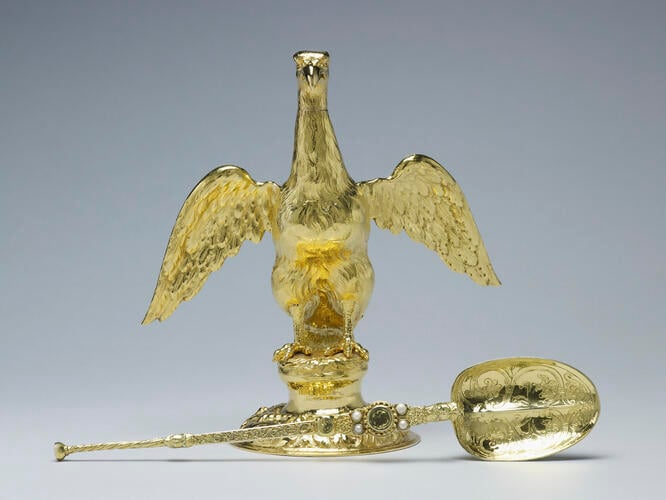
The Ampulla will hold the sacred oil for the anointment at the coronation (Royal Collection Trust)
Regalia seen in the investiture
Spurs
Spurs represent knighthood and the chivalric virtues that are associated with it, also an acknowledgement that Kings used to lead their armies into battle. Originally made for Charles II in 1661, they were altered for the Coronation of George IV in 1820, when more modern materials became available. Each of the gold spurs feature a Tudor rose and a velvet-covered strap with gold embroidery.
Traditionally, the spurs were fastened to the Sovereign’s feet, but since the Restoration they have been held to the ankles of the Monarch and then placed on the altar after the ceremony.
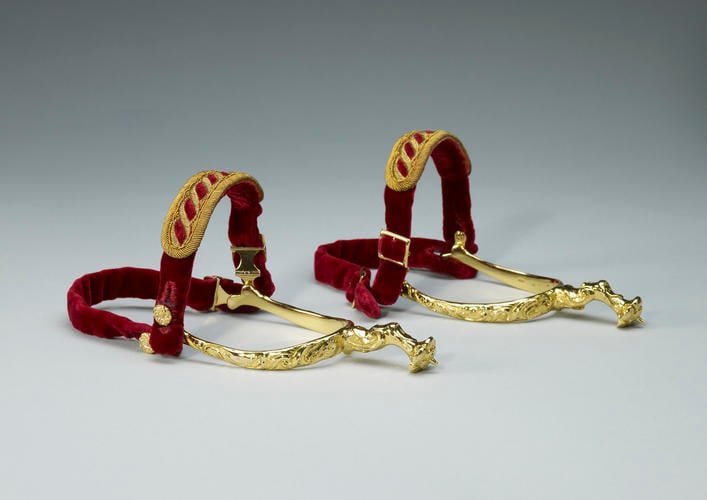
The two Spurs that form part of the Coronation regalia. (RCT)
Sword of Offering
Made in 1820, the Sword of Offering has a steel blade and is mounted in gold and set with jewels, which come together to form a rose, a thistle, a shamrock, oak leaves, acorns and lion’s heads. It is also called the Jewelled Sword, and is symbolic of the royal role to defend and advocate, while also being a symbol of authority.
The sword is contained in a gold-covered leather scabbard. The scabbard is covered with roses, thistles and shamrocks, set with diamonds, rubies and emeralds, with a similar design on the reverse.
It was first used in the Coronation of George IV and was suggested by George IV himself, and is made to represent the three other swords in one piece.
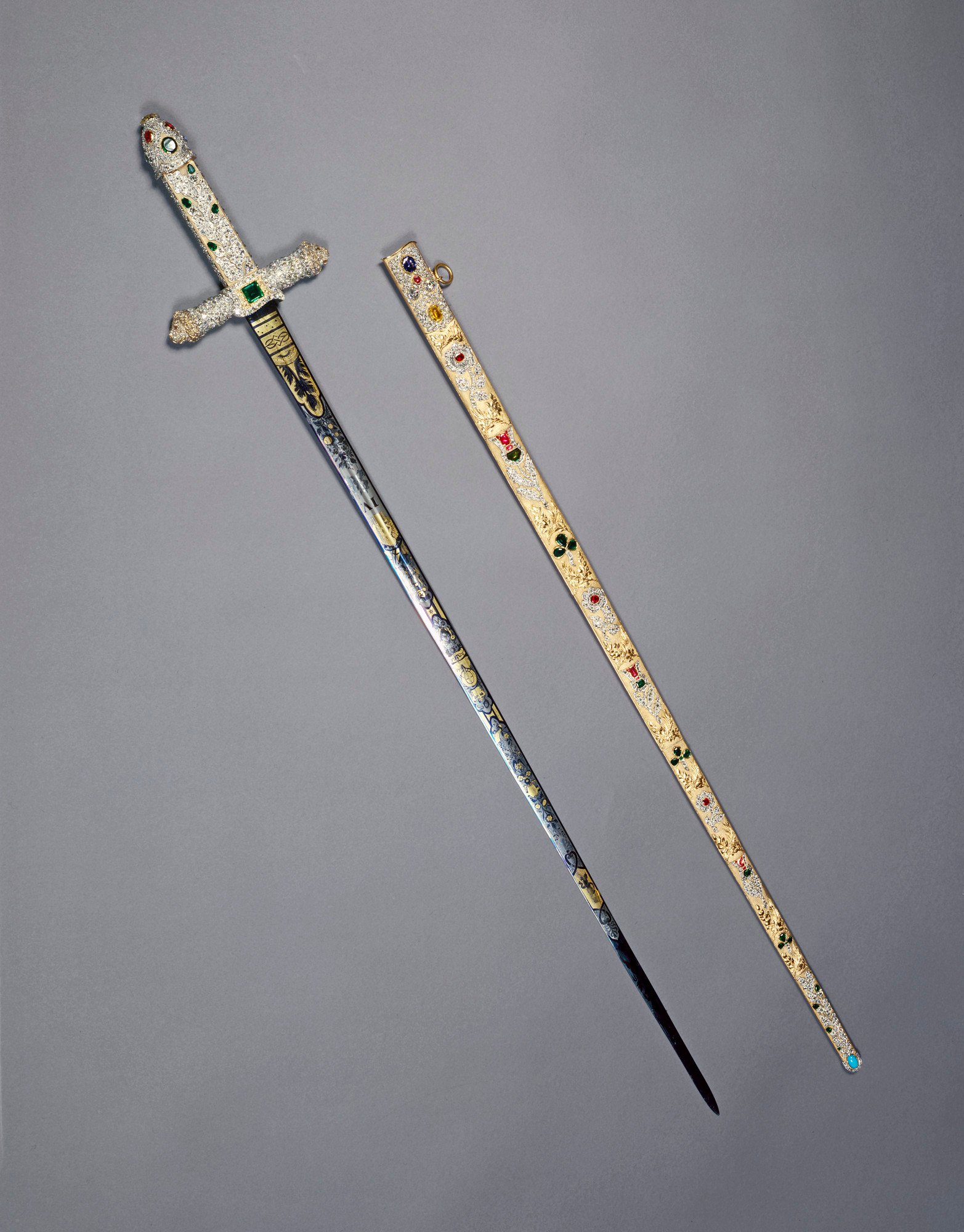
The Sword of Offering. (RCT)
Armills
The Armills are bracelets made from gold, champlevé and basse-taille enamel, and are lined in velvet. They are thought to represent symbols of knighthood and military leadership. They are placed on the Sovereign’s wrists after the anointing to symbolise God’s protection.
The Armills date back to 1661 and have been used at every coronation from Charles II’s until George VI’s in 1937. New pieces were made for Elizabeth II’s Coronation as a gift from the Commonwealth, replacing Charles II’s pair.
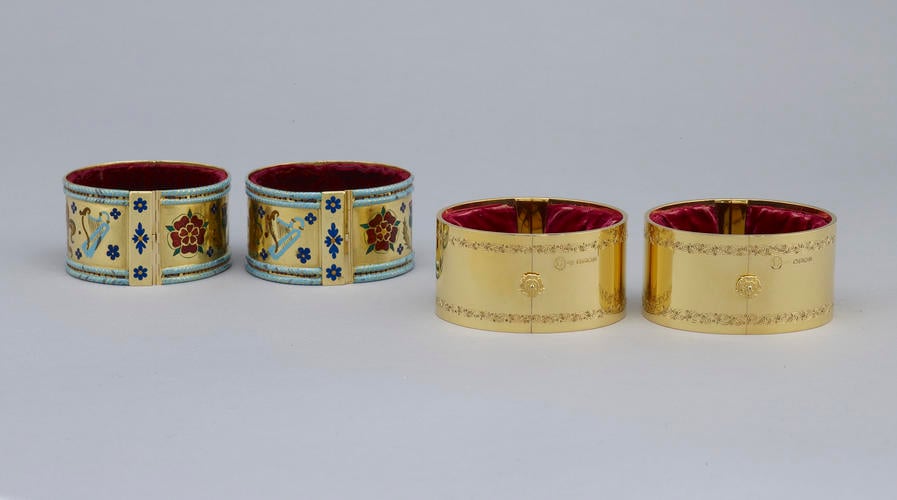
Elizabeth II &Charles II’s Armills. (RCT)
The Sovereign’s Orb
is a symbol of Godly power. A cross above a globe, it represents ‘Christ’s dominion over the world’, as the Monarch is God’s representative on Earth.
It mounted with nine emeralds, 18 rubies, nine sapphires, 365 diamonds, 375 pearls, one amethyst and one glass stone. The pearls divide the orb into three sections, which represent the three continents medieval rulers believed existed.
It is placed in the recipient’s right hand before being returned to the altar.
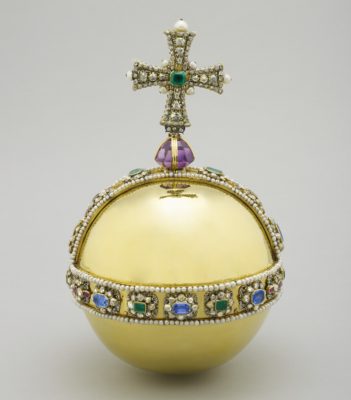
The Sovereign’s Orb – part of the Crown Jewels – features hundreds of precious stones and represents God’s power on Earth (Royal Collection Trust/© Her Majesty Queen Elizabeth II 2016)
Sovereign’s Ring
Made for William IV’s coronation in 1831, the Sovereign’s Ring consists of an octagonal sapphire, overlaid with five rubies (four rectangular-cut and one square-cut) to form the shape of a cross. The border sees 14 cushion-shaped diamonds, with a further two where the band attaches. Everything is set in gold.
During the main coronation ceremony, the ring is placed on the fourth finger of the Sovereign by the Archbishop of Canterbury, as a symbol of ‘kingly dignity’ and their commitment to their duty.
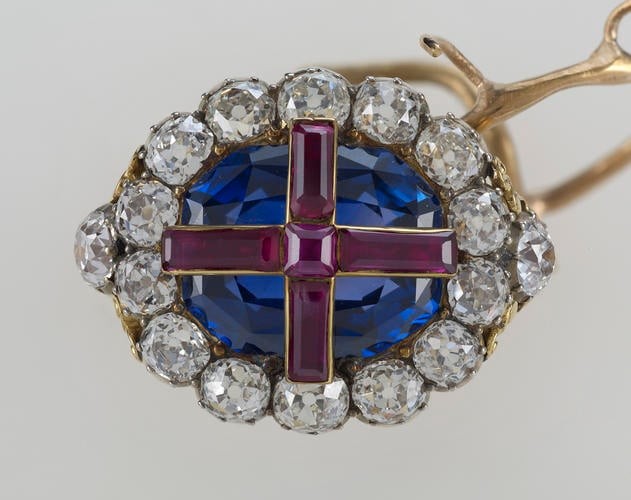
Sovereign’s Sceptre with the Cross
After putting on the glove, the Sovereign’s Sceptre, also known as the Sovereign’s Sceptre with the Cross, is placed in their right hand. It represents the temporal power of The King or Queen, and is associated with good governance.
The Sceptre holds the world’s largest diamond, the Cullinan I. It was found in South Africa in 1905 and was gifted to Edward VII in 1907 to help mend relations between Britain and South Africa after the Boer War. The piece had to be reinforced to support the weight of the stone.
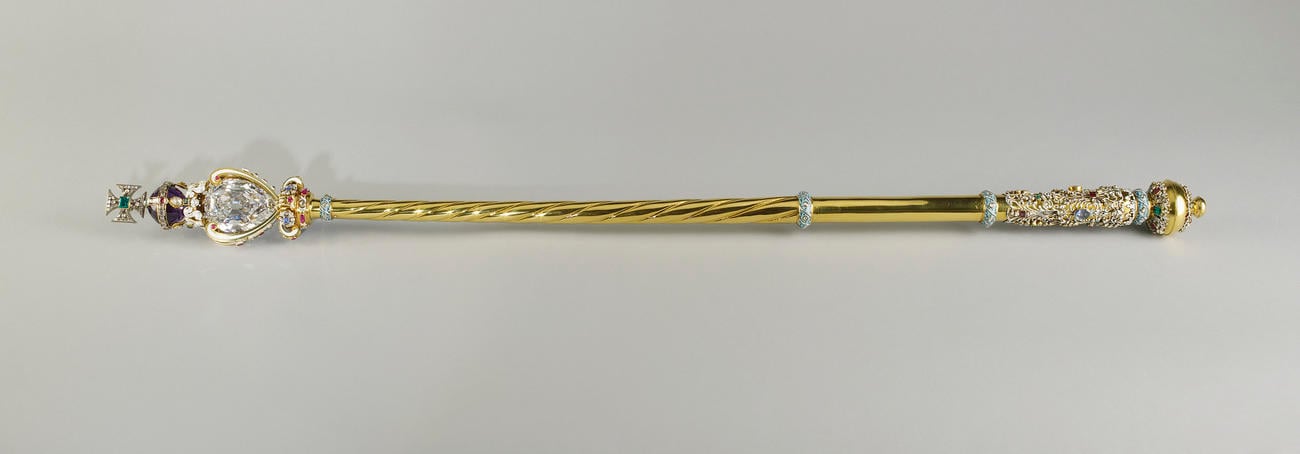
Sovereign’s Sceptre with Cross. (RCT).
Sovereign’s Sceptre with Dove
Similar to the Queen Consort’s Sceptre, the Sovereign’s Sceptre with Dove represents the Sovereign’s spiritual role, with the dove representing the Holy Ghost, and the Monarch’s care for their people. It is sometimes called the Rod of Equity and Mercy.
The Sceptre is seen after the Monarch has been anointed with the holy oil and given a number of regalia, where they are presented with the Sovereign’s Sceptre with Cross too.
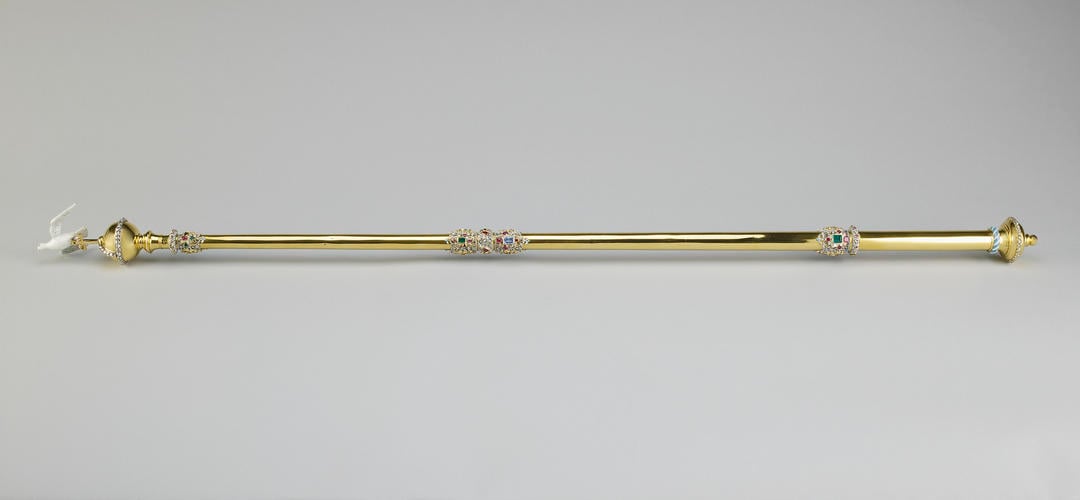
Sovereign’s Sceptre with Dove. (RCT).
Regalia seen during the crowning
St Edward’s Crown
is the one placed on the Monarch’s head during the coronation ceremony. It was made for Charles II in 1661, to replace the medieval crown which had been melted down in 1649 by the Parliamentarians. Charles II’s version features some of the original design features, such as four crosses-pattée, four fleurs-de-lis to form the base of the crown, and two intersecting arches.
St Edward’s Crown is made of solid gold, set with over 400 stones; the velvet cap is trimmed with an ermine band.
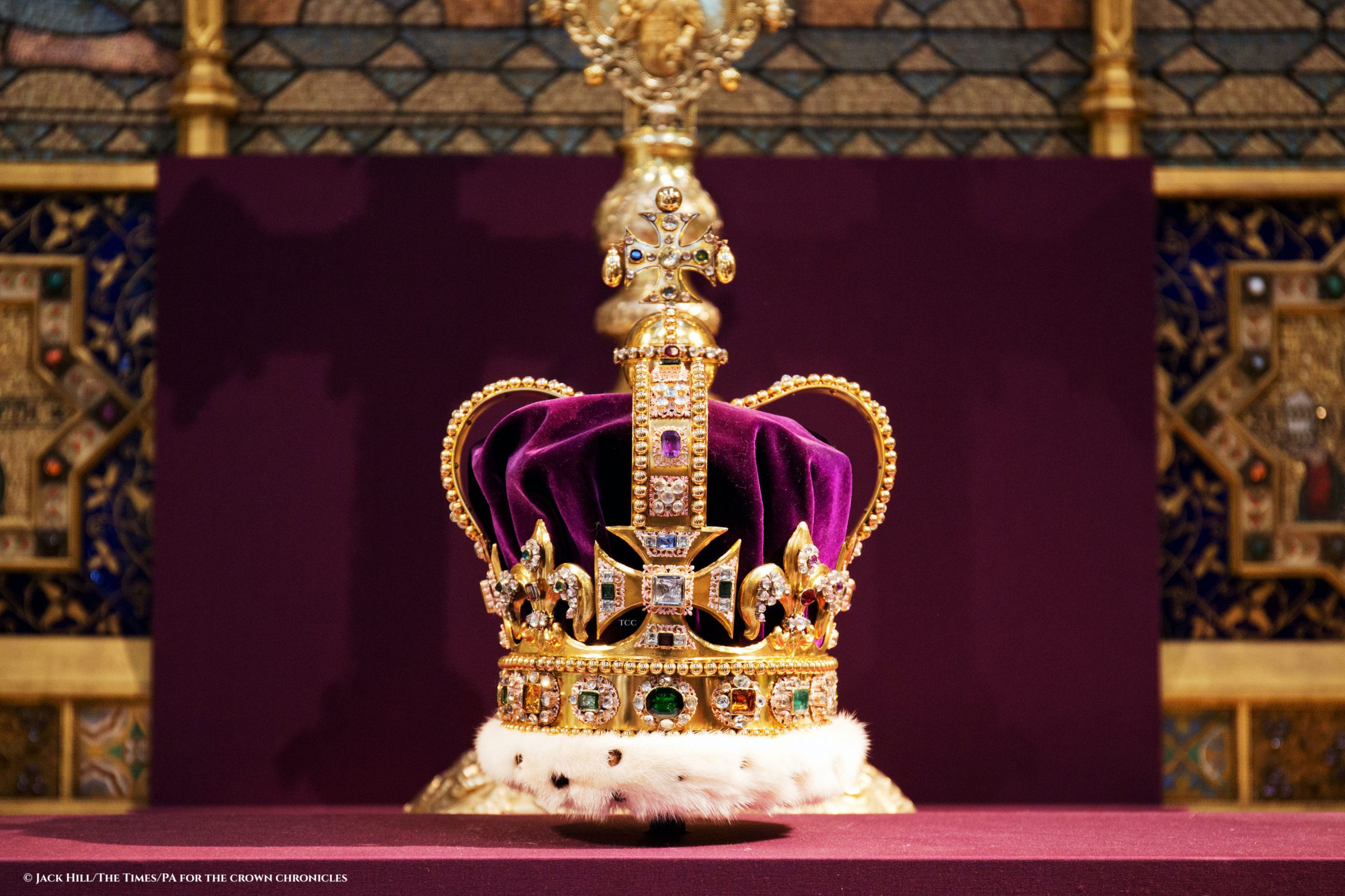
St Edward’s Crown
Imperial State Crown
The Imperial State Crown was created from open gold frame by royal jewellers, Garrard, in 1937 for the coronation of George VI. It is set with a staggering 2868 diamonds and a further 17 sapphires, 11 emeralds and 269 pearls; three other large stones (one diamond, one sapphire and one ruby) are set mounted the frame – a total of 3168 stones.
The crown, unsurprisingly, is rather heavy, weighing 1.06kg (roughly 2.3lb) and standing 31.5 cm (12.4 in).
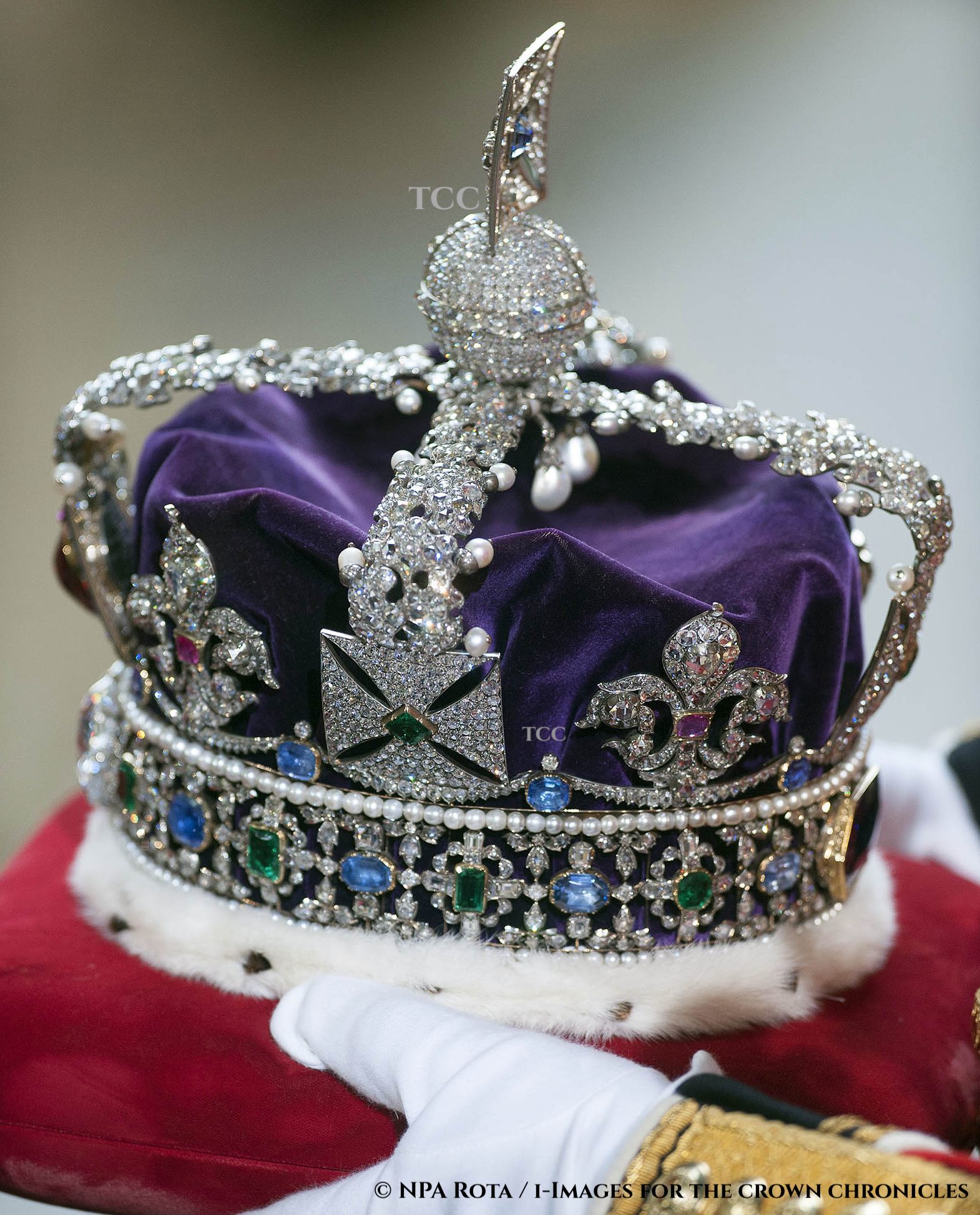
As part of the Royal Collection, the Regalia are held in trust by the Monarch on behalf of the nation.


